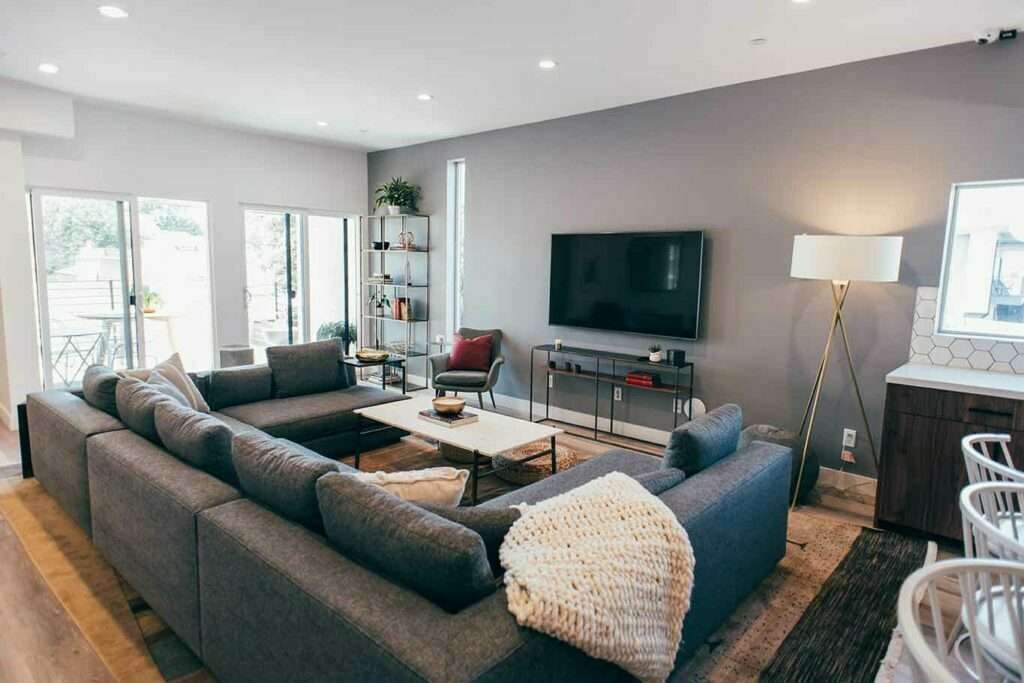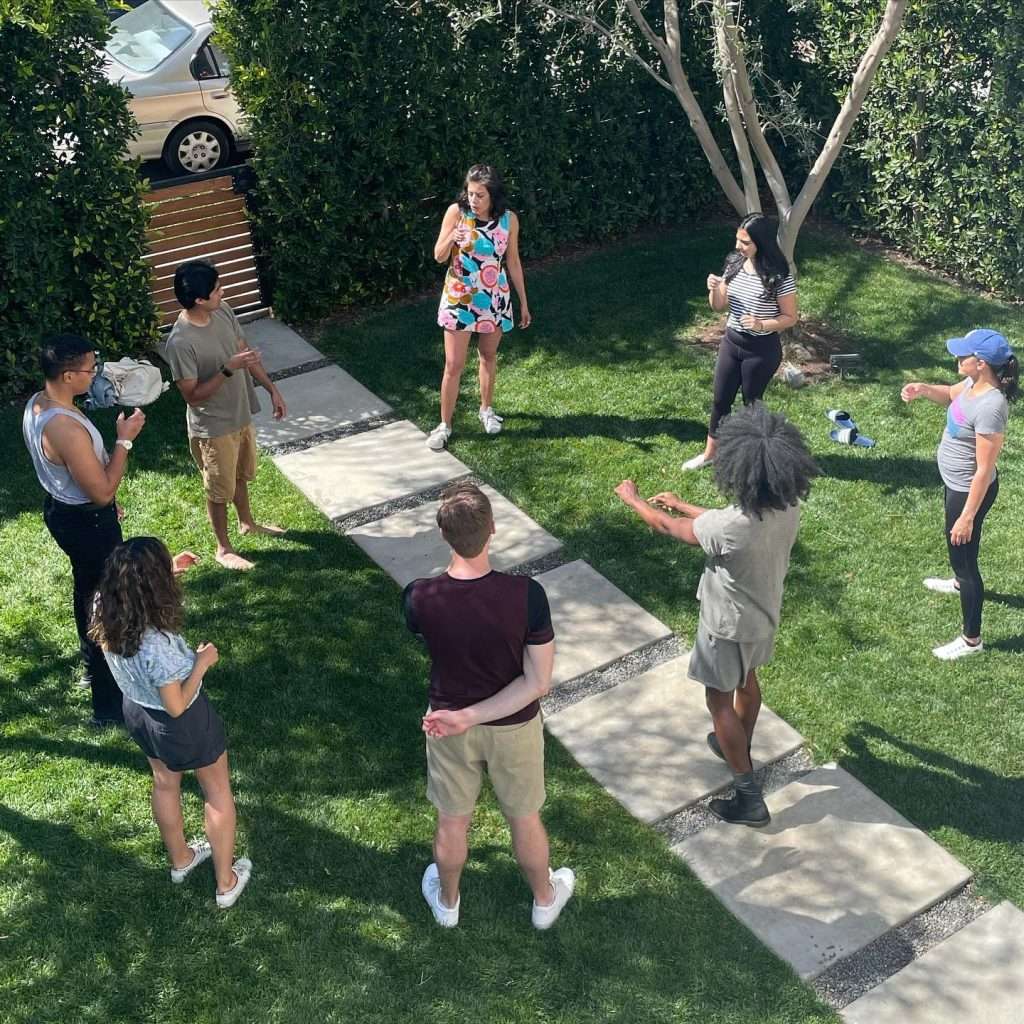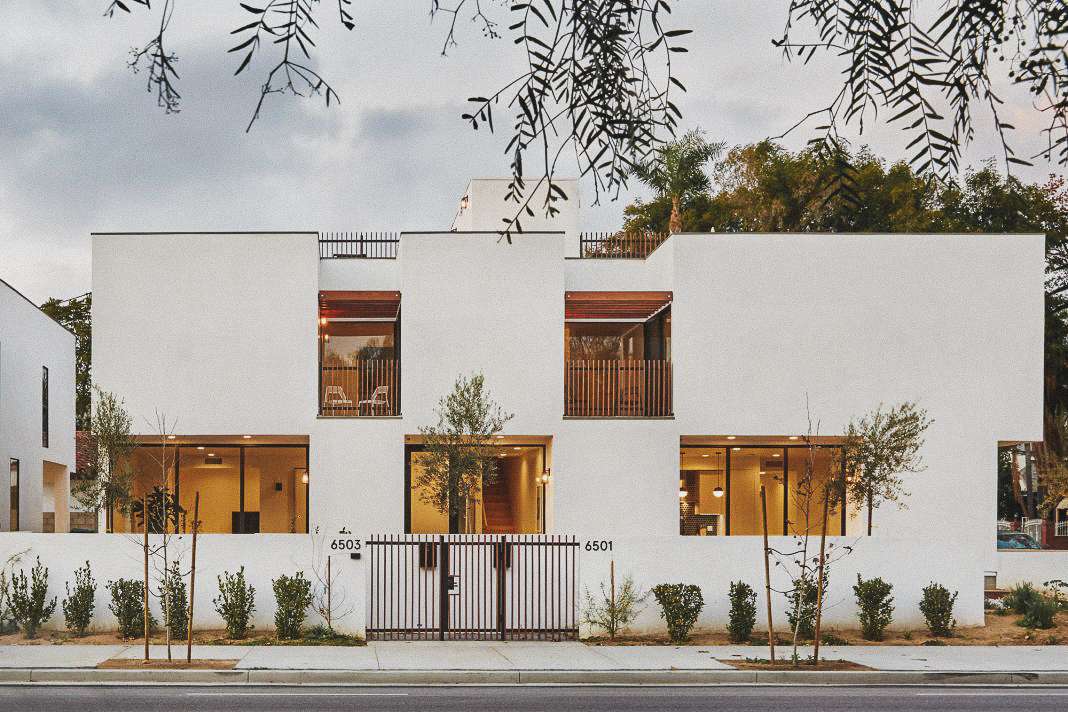Collaborative housing company Eddy brings a focus on meaningful connections and sustainability.
Cooperative living often comes with small rooms and lots of baggage. Credit the communes and cults of our not-so-distant past and it’s easy to see why. Intentional communities have long been crammed hotbeds of corruption, packed with freeloaders, grifters, and the like. But the collaborative Los Angeles housing project, better known as Eddy, is out to prove otherwise.
Situated in one of LA’s trendy up-and-coming neighborhoods, a stone’s throw from the Hollywood Strip and the 4200 acres of Griffith Park, one of the newest locations is the East Hollywood Eddy house that provides affordable housing in a city known for the opposite. The house boasts 40 furnished bedrooms, “spa-like” bathrooms, a Peloton-equipped fitness center, fully functional kitchens, and lounges—and, in true LA fashion, a soundproof recording studio.
Benefits of cooperative housing and communal living
The setup, like other Eddy locations, attracts a large number of students.
“We think these types of programs will grow significantly as schools modify their value proposition to students. Looking further, we see the future of higher education as more digital, remote, and on-demand. However, that structure misses one of the most important parts of college—the social experience,” Leeor Maciborski, one of Eddy’s Co-founders, said in a statement.
But it’s not just for students.

Covid led to a rise in applications for co-housing projects like Eddy. For those who lost work as a result of the pandemic, cooperative living offers economic benefits—rent In LA starts at a reasonable $800. There are options: shared or single rooms, private bathrooms, and more decked-out units that can cost as much as an apartment.
Utility bills for LA residents can skyrocket while trying to stay cool during the swath of summer’s 100-degree days. And finding housing that’s affordable can often mean hour-plus commutes to work or school, adding to the stress levels in an already tense city.
Angelinos don’t need another reminder of what our housing crisis looks like, either. The streets are, quite literally, lined with unhoused people. It’s a problem so widespread, the city saw an uptick of about 30 percent in the last five years. There are now an estimated 60,000 unhoused people in Los Angeles and failed effort after failed effort by the city to rehouse them.
Community in communal living
Co-living offers its residents something more than just affordable living—something that was also lacking during lockdown: community.
While co-living in the U.S. often comes with the stigmas of hippie-era communes, it’s not all Kumbaya and naked gardening. Co-living doesn’t have to mean forced community events, even. For many residents, it’s just shared resources, not shared lives.
In Scandinavia, co-living is elevating sustainable solutions to the climate crisis. Residents of the Nordic co-living space Vindmøllebakken reduce their carbon footprints by sharing space and energy-intensive appliances like refrigerators and washing machines, things we don’t often think about as contributing factors to the climate crisis.

Awareness of the crisis led the architects behind Vindmøllebakken to source local wood instead of cement and steel for much of the housing project’s development. There are communal meal options, too, that can reduce food waste.
At its core, Eddy’s goal is to foster these community connections, much like communes that thrived in the 1960s and 1970s.
The company, which has several other buildings including one in West Hollywood and one in Beachwood Canyon—says it’s the peer-to-peer experience that’s driving a bulk of the interest in co-living.
And these projects are driving big interest from investors, too. One of Eddy’s LA competitors, Treehouse, has piqued the interest of high-profile investors like Scooter Braun and Reddit co-founder Alexis Ohanian.
Maciborski says it’s important these projects move forward, now more than ever, so that the next generation “of students, ambitious creatives and visitors have access to affordable housing options in larger cities.”


